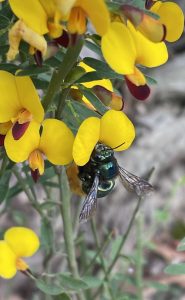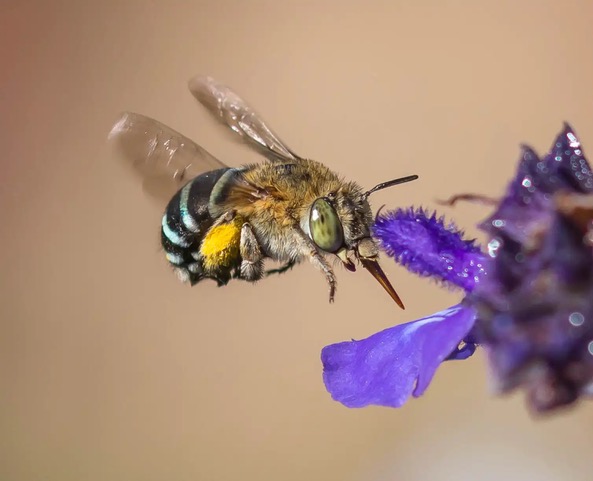While many of us realise conserving native plants helps conserve native fauna, the reverse is also true, particularly when it comes to native bees.
The ABC online posted a fascinating article about this called Gardeners urged to plant natives in bid to help battling native Australian bees on 13th November 2021.Peter Geelan-Small summarises it for us.

European honey bees are easily spotted in Australia but how often would we recognise a native Australian bee if we saw one? There are probably about 2,000 native bee species in Australia, most of which live in the ground. While this might suggest the native bee population is healthy, it’s probably not surprising that native bee habitat is threatened by agricultural and urban development, chemical use and climate change, particularly severe weather events. While these threats are known, the degree to which they are affecting native bee populations is not clear, as there is no historical data on native bee populations.
Another factor working against native bees is home gardeners planting non-native plants in their gardens. This results in native bees losing food sources and nesting sites. As native plants are replaced by non-native plants, native fauna clearly suffer. However, if native fauna populations shrink, there is a knock-on effect that reduces native plant populations. This demonstrates the interdependence of native flora and fauna.
There has been action to conserve native bees, mostly from beekeepers. Another strategy has been through urban beekeeping. However, home gardeners can also join in this conservation work by planting a variety of native species so that pollen and nectar are available at all times of year rather than just in particular seasons. In this way, a diverse range of native pollinators is supported and this also gives reciprocal benefits to native flora!
Some links to useful resources related to this article are:
Bee Friendly Farming (Wheen Bee Foundation)
In particular, there are regional bee-friendly planting guides available here
Another useful website is the Beekeepers’ Society of South Australia
They provide a link to another planting guide, Bee Friendly: a planting guide for European honeybees and Australian native pollinators, which you can get here

